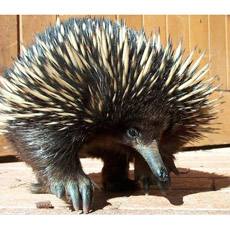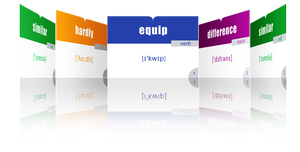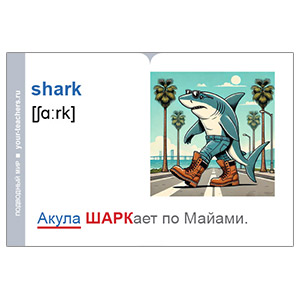Описане ехидны на английском языке
- Подробности
- 11734
На этой странице представлено краткое описание ехидны на английском языке. Двойной клик по слову откроет его перевод и озвучку. Ключевые слова можно закрепить в тренажёре в конце страницы. Работа со словами задействует моторную память и помогает лучше из запоминать. К каждому разделу добавлен аудиофайл в формате MP3 для более глубокого разбора и развития навыков аудирования.
ЕХИДНА

Vocabulary:
| № | Английский | Транскрипция | Русский |
|---|---|---|---|
| 1 | prickly | [ˈprɪkli] | колючий |
| 2 | nocturnal | [nɒkˈtɜːnl] | ночной |
| 3 | nosed | [nəʊzd] | носатый |
| 4 | little | [ˈlɪtl] | маленький |
| 5 | funny | [ˈfʌni] | забавный |
| 6 | cute | [kjuːt] | милый |
| 7 | round | [raʊnd] | круглый |
| 8 | hasty | [ˈheɪsti] | торопливый |
ПОТРЕНИРУЙТЕ СЛОВА
Общая информация об ехидне
Look at the picture. You can see a brown echidna. Its head is covered with gross hair. Its neck is short and barely visible. Its ears are not visible. Its muzzle is extremely elongated. It looks like a narrow beak. Its mouth is at the end of its “beak”. It’s very small and toothless. Its limbs are short. Its fingers have powerful flat claws. Its back and sides are covered with long spines. Its fur is brown or black. Its tail is very short.
LISTEN TO THE TEXT
15 Интересных фактов об ехидне
Echidnas are egg-laying monotremes in the family Tachyglossidae. They are also called spiny anteaters. The narrow beak is about 75 mm long and may be straight or slightly curved. The sticky tongue can protrude about 18 cm and reach a total of 25 cm. Strong claws help break termite mounds and dig soil. Short spines are hollow, about 5–6 cm long, with dark tips. Typical body length is 30–45 cm, and body weight varies from 2.5 to 5 kg. Sight is poor, but smell and hearing are very good. Their ears detect low-frequency sounds made by ants and termites underground. Echidnas eat ants, termites, and small insects with a toothless mouth. In danger an echidna rolls into a ball, exposing sharp spines. Females lay a soft-shelled egg and keep it in a belly pouch. A tiny puggle hatches after about 10 days and drinks milk from skin pores. In the wild echidnas often live up to 16 years, and in zoos the record is about 45 years. Echidnas help control pests and loosen soil as they dig.
LISTEN TO THE TEXT








 Как правильно изучать английский язык по карточкам (статьи)
Как правильно изучать английский язык по карточкам (статьи)